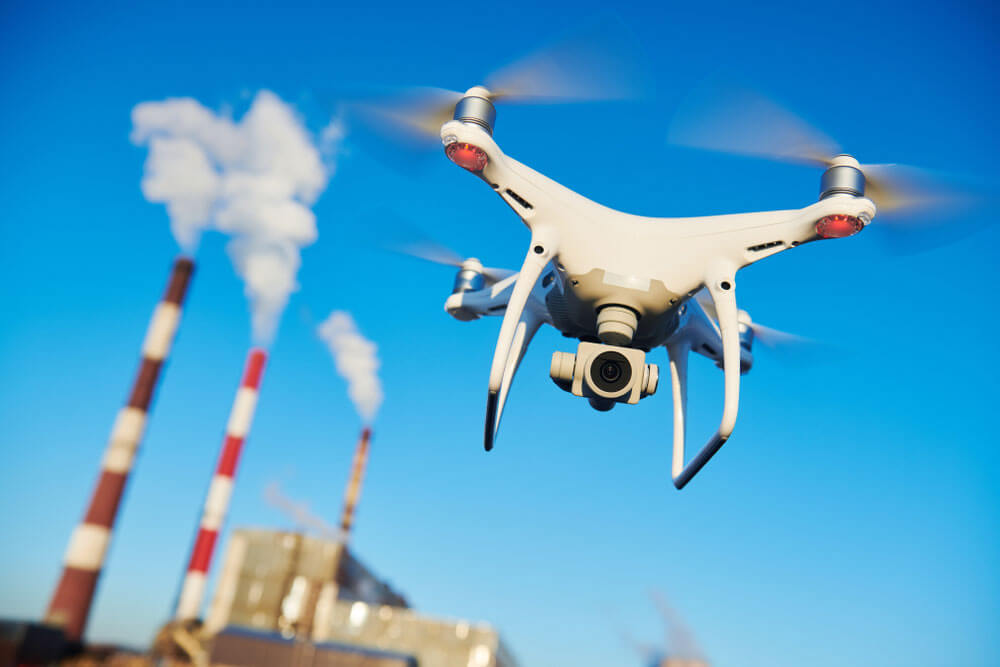By Nate Ernst, AG Energy Ambassador
In the wake of mysterious aircraft sightings that have gripped the nation’s attention and sparked widespread speculation, the spotlight has turned to a critical yet often overlooked aspect of national security: the protection of infrastructure from potential drone threats.
And yet the Federal Aviation Administration (FAA) has still not implemented Section 2209, a pivotal piece of legislation from 2016 written to help secure the National Airspace (NAS) and, by extension, the critical infrastructure that forms the backbone of our society.
As investigators scramble to unravel the enigma of these unidentified aerial phenomena, a silver lining emerges—an opportune moment for the FAA to take decisive action. The timing couldn’t be more perfect for the FAA to solidify its proposed policy on safeguarding critical infrastructure from anomalous drone activity to bolster both safety and resilience in an increasingly unpredictable airborne landscape. The need for a robust regulatory framework has never been more pressing.
The Rising Drone Threat to Critical Infrastructure
Despite capability advancements for multiple industries, UAS accessibility and capabilities also pose significant risks to sensitive facilities. Energy plants, telecommunications networks, water treatment facilities and transportation hubs are all potential targets for malicious UAS activity.
The threat is not merely hypothetical. Incidents of unauthorized drone flights near critical infrastructure have been reported worldwide, raising concerns about espionage, sabotage and potential terrorist attacks. The recent flurry of unexplained sightings serves as a stark reminder of the vulnerabilities that exist in our airspace, particularly when it comes to protecting the nation’s most vital assets. These events underscore the urgent need for comprehensive regulations aimed at protection.
Understanding FAA Section 2209: A Shield for Critical Assets
Congress designed Section 2209 of the FAA Extension, Safety, and Security Act of 2016 to address these emerging threats. At its core, this legislation empowers the FAA to establish “no-fly zones” in the airspace above critical infrastructure facilities. This proactive approach aims to prevent unauthorized UAS incursions that could disrupt operations, compromise safety or expose vulnerabilities.
The reach of Section 2209 is extensive. It covers a wide array of critical infrastructure sectors:
- Energy production and distribution facilities
- Telecommunications networks
- Water supply and treatment plants
- Healthcare facilities
- Major transportation hubs (airports, railways, highways, and ports)
By designating these areas as restricted airspace, Section 2209 creates exclusion zones to enhance security by creating a perimeter around these assets and making it significantly more challenging for bad actors to exploit potential weaknesses.

Why Section 2209 Matters: Implications for National Security
The implementation of FAA Section 2209 carries far-reaching implications for national security, operational continuity and public safety. This legislation seems even more crucial today, given recent events.
Fortifying Our Defenses
Critical infrastructure facilities are often considered high-value targets for those with malicious intent. Unauthorized UAS activity over these sites could facilitate reconnaissance missions, data breaches or serve as a precursor to physical attacks. By establishing clear no-fly zones, Section 2209 significantly enhances the security perimeter around these assets to make it more challenging for malicious actors to exploit vulnerabilities.
Ensuring Operational Continuity
The uninterrupted operation of critical infrastructure is paramount to national security and public well-being. Any disruption can have cascading effects, leading to service interruptions, compromised safety and substantial financial losses. Section 2209 mitigates these risks by establishing clear protocols for drone operations that ensure critical facilities can function without undue interference.
Safeguarding the Public
The integrity of critical infrastructure is intrinsically linked to public safety. Unauthorized UAS activity poses significant risks, particularly in densely populated areas. By demarcating no-fly zones, Section 2209 minimizes the likelihood of drone-related incidents, protecting both the infrastructure and the communities they serve.
The Urgent Need for Implementation
While the provisions of Section 2209 are undeniably beneficial, their full potential can only be realized through swift enactment and robust implementation. Several compelling factors underscore the urgency of putting this legislation into action now.
Adapting to an Evolving Threat Landscape
The threat landscape is continuously evolving. Drones add a new dimension to potential risks faced by critical infrastructure. Recent hysterical over unidentified aircraft sightings in the Northeast United States, highlight the need for proactive measures to address emerging aerial threats.
Keeping Pace with Technological Advancements
As drone technology becomes more sophisticated and accessible, the potential for misuse grows. Implementing Section 2209 aligns regulatory mechanisms with these technological advancements. It addresses a gap that the FAA has struggled to bridge for drone integration into the national airspace system.
Providing Legal and Regulatory Clarity
The absence of clear regulations regarding drone operations over critical infrastructure creates ambiguity and hampers enforcement efforts. Enacting Section 2209 provides much-needed legal and regulatory clarity. Policy should outline specific guidelines for UAS operators and better equip enforcement agencies with the necessary tools to address violations.
Navigating the Complexities of Implementing Section 2209
While the benefits of FAA Section 2209 are clear, its successful implementation requires careful navigation of several challenges and considerations.
Fostering Collaboration and Coordination
Effective implementation of Section 2209 demands collaboration among various stakeholders, including federal agencies, state and local governments, critical infrastructure operators and the drone industry. This multi-faceted approach would ensure both comprehensive coverage and fair enforcement mechanisms.
Developing Robust Technological Solutions
While Section 2209 establishes the scaffolding for a regulatory framework, it does not address the technical aspects of detecting and countering unauthorized drones. In tandem, the FAA needs to work on establishing standardized capabilities for counter-UAS (CUAS) operations to complement these regulatory measures.
Raising Public Awareness and Education
Perhaps the most crucial component of successfully implementing Section 2209 is raising public awareness about the implications of unauthorized UAS activity over critical infrastructure. Educational campaigns for drone operators can emphasize the importance of adhering to no-fly zones and the potential consequences of violations.
Securing Policy and Legislative Support
Comprehensive policy and legislative support at all levels of government is essential to successfully implement Section 2209. This includes allocating resources for enforcement, incentivizing technological innovation and ensuring that local and private policies align with the objectives of the legislation.
The Path Forward: Embracing Innovation and Security
As we face an increasingly UAS-intensive environment, the protection of critical infrastructure assets must remain a top priority. FAA Section 2209 offers a proactive and comprehensive framework to achieve this goal and underscores the nation’s commitment to resilience and security. Its implementation is not just about restricting drone flights; it’s about creating a secure environment that allows for the responsible integration of autonomous systems into our national airspace.
By implementing this legislation with an emphasis on collaboration, technological innovation and public awareness, the FAA can take a significant step towards ensuring that our critical infrastructure remains safeguarded against emerging challenges. Immediate implementation of Section 2209 in a balanced manner that prioritizes security without stifling innovation will pave the way for a safer, more resilient future for all Americans by shaping the landscape of drone operations and critical infrastructure protection.
In short, the robust implementation of FAA Section 2209 is not just a Congressional mandate —it’s a national imperative. The time to act is now to ensure that our critical infrastructure remains secure in the face of evolving aerial threats.
By: Nate Ernst

